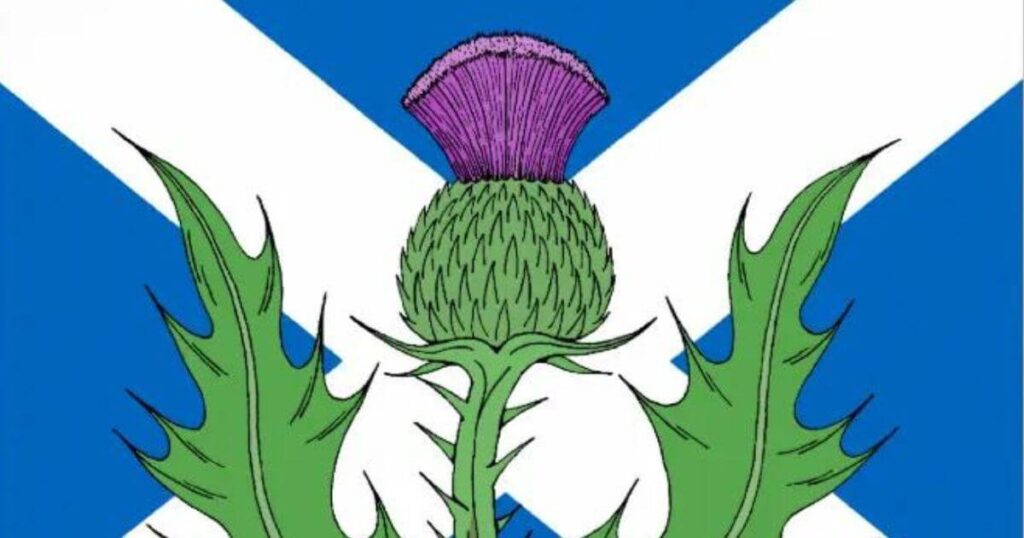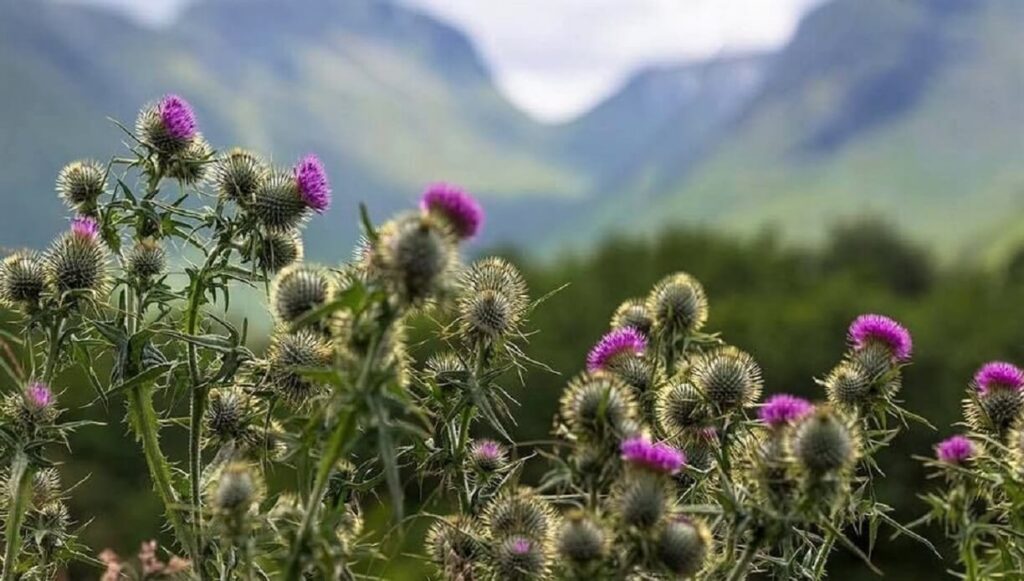Posted by Maris on 24th Jul 2023
The Scottish Thistle – Why It’s The Perfect National Flower
The Scottish Thistle is the oldest recorded ‘National Flower’ and is undoubtedly one of the most well-known and immediately recognized symbols of Scotland.
But although it may look familiar, you probably don’t know the legends that surround it’s acceptance as a national Scottish emblem.
A modest weed might seem an odd symbolic choice, but truly what could be better than a native-born plant which is as brazen as it is beautiful?
There’s a rich history and various stories surrounding the thistle, and we’ll take a closer look at some of it right here.
The History & Legends Of The Scottish Thistle

The Scottish thistle is a persistent tiny weed that always blossomed across Scotland’s landscape, but it wasn’t until the 13th century that it’s role in the country’s symbolism and written history began.
One of the best-known thistle legends takes occurred in the mid-13th century during a surprise invasion by the forces of the Norse king, Haakon, at Largs (one of western Scotland’s coastal ports).
The tale has it that after arriving ashore, this Viking force planned to creep up on the Scottish Clansmen and Highlanders and overcome them as they slept.
This amount of stealth required that they go barefoot – which proved to be their undoing.
Unfortunately for these naive invaders, one of their troop’s bare feet struck down hard on a Scottish thistle and his cries of shock and pain were enough to wake the sleeping Scots.

Leaping to their feet, the clansmen surged into battle and the rest, as they say, is history… and yep, the fiery Scots were victors
Legent has it that because of the plant’s heroic role in the result of the fight, the thistle was promptly adopted as a national emblem.
Now, how much of this is reality no one knows, but we do know that by the 15th century the Scottish thistle was being employed as a national emblem.
It occurs on silver coins that were struck in 1470 during the reign of King James III (1466 – 1488), and early in the 16th century, it formed a fundamental feature of Scotlands’ Coat of Arms.
In 1503, the marriage of King James IV of Scotland to Princess Margaret Tudor of England, seems to have been the inspiration behind the song entitled ‘The Thrissil and The Rois’ (‘The Thistle and The Rose’) authored by the Scottish poet William Dunbar.
The thistle represented King James and the rose represented Princess Margaret.
Toward the middle of the same century, historians say that Scotlands’ highest chivalric order was founded by King James V (son of King James IV), it’s name was ‘The Order of The Thistle’.

It’s heraldic symbol was, not surprisingly, the modest thistle…..
Heraldic sign of the Scottish’ Order of the Thistle’. Public domain photograph, credited toWenceslaus Hollar [Public domain], through Wikimedia Commons
Image Attribution: Wenceslaus Hollar (Public domain), through Wikimedia Commons
The official motto of this organization is’Nemo me impune lacessit’, this Latin translates into ‘No one provokes me with impunity’ (or in Scottish-English ‘ Wha daur mess wi’ me?’ ) which ties in well with the original legend.
Interestingly, it’s likely that this order had much older roots, because some historians believe that James V was restoring a much more ancient order, one that perhaps reached back as far as the early 9th century.
In which case the thistle would have been depicted in Scottish iconography even earlier than it’s debut as a protector of the kingdom in the Viking v Scots fight at Largs.
Today the Thistle is seen on everything from sporrans and jewelry to soap and tea-towels, and it’s a Scottish icon recognized all over the world.
That little weed has come a long way!
To celebrate the beauty and value of Thistle in Scottish culture, Tartan Plaid offers a collection of Thistle flowers inspired by a wide range of products such as clothing, homes, shoes and more. Shop now for special discounts for customers reading this blog.


